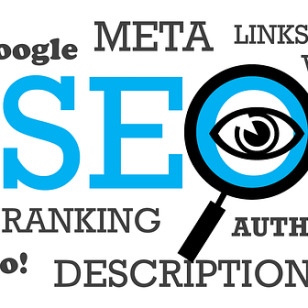By Kelsey Boudin
President and Founder, Southern Tier Communications Strategies, LLC
We’re back for some more fun at Day 2 of Inbound 2020. This time I stepped away from my home office and soaked in the marketing, sales and business insights from a dining room table — while helping my kindergartener with her Zoom classes.
What did we learn today? That email marketing is cool — and we can actually thank the Covid pandemic for that. That emojis aren’t half bad either — if you use them right. That the dynamics behind a young child’s search for her bathing suit is more similar than you’d think to the artificial intelligence (AI) guiding search engines today. And so much more.
We may not be able to step outside the Boston Convention Center this year to grab a bite from the food trucks and chew over our new insights with colleagues. But here’s to sitting in our PJs and networking over some painfully hot microwave Hot Pockets. Here are some of my key takes from Day 2 of Inbound 2020.
Critical Email Marketing Techniques to Crush the Competition
Jay Schwedelson, President and CEO, Worldata
“Email marketing is finally cool,” Jay Schwedelson said, not that I ever thought it wasn’t (when done well). For all its craziness, the Covid pandemic actually has a lot to do with that. People are attached to their email more, whether staying in touch with work remotely or out of boredom on the couch.
A few stats:
- Inbox activity up 22%
- Email opens up 16%
- Email newsletter opens up 19%
For an experienced newsletter writer like myself, I was pleasantly surprised to see registrations for newsletters are up 40%. What does that mean for you? “This is the time to be testing things, because everyone’s opening emails. People are consuming information,” Schwedelson said. Email marketers should use this opportune time to test subject lines, personalization, days sent, times sent, etc. to find what Schwedelson calls “that secret sauce.”
And “that secret sauce,” he added, now involves recognition and respect for the professional trials of this pandemic. Emails with a subject line mentioning such difficulties aiming toward solutions toward those troubles are opened 48% more often for B2C companies and 38% more often for B2B. “This is not a normal time,” Schwedelson said. “We don’t just want normal information.”
One final thought: what about emojis in a professional email? Are they best saved for teens texting and Instagram posts? Well, that depends on your industry. Steering clear of endless smiley faces and other cliched nonsense, why not test a clock in a subject line to express an approaching deadline? “We have a full supply of boredom right now. Try something different,” Schwedelson said.
The End of Technical SEO: How Google’s AI Forces SEO Strategies to Be More Human
Dale Bertrand, President, Fire&Spark
Dale Bertrand recalled a story of his young child looking for her bathing suit. Tears were coming. The dad needed to be a dad and act to solve the problem. He offered solutions. Did her brother start the laundry? Not likely and irrelevant. Did she simply misplace it? Not empathizing with the situation. They eventually located the bathing suit without too much heartache, but the interaction drew a remarkably similar parallel to the way search engine AI answers user queries today.
“My daughter came to me with a query,” Bertrand said, “but I didn’t know. I hadn’t considered the context.”
Search engines have evolved over time. Remember way back when you could stuff a keyword into a blog an obscene number of times and end up ranking? Well, as you know, rules-based algorithms are now AI algorithms aiming to use context and empathy in solving user problems, aiming to consider the mission behind the search.
So the days of technical SEO and endlessly tweaking H1s for better rankings are dead, Bertrand said. Search engines like Google have spent great amounts of time and money to make technical improvements irrelevant in lieu of content relevance. Is the content purposeful? Mission-driven SEO goes beyond keyword-targeted content to consider the human element. That’s why it’s now important to tell compelling stories and connect with influencers.
Here’s Exactly How to Sell to the C-Suite
Ryan Longfield, Chief Revenue Officer, Gong.io
You, the friendly sales rep, finally have the ear of the company’s chief executive. The clock is ticking. What do you do with that tiny window of time with this experienced and discerning individual whose sole professional purpose is to say yes or no? Ryan Longfield detailed the ways a seller may navigate a pitch through the busy mind of a C-level executive. No surprise, it’s a speed chess match requiring a full understanding of psychology.
The biggest mistake? Too much discovery. It’s time consuming, yet you still need to understand what powers and informs the executive’s decisions. “You don’t have 10 to 15 questions,” Longfield said. “Their mindset is too action oriented. Their time is too valuable.” An alternative? Seek your answers, if possible, from someone else on the team. It’ll buy you some time to get up to speed without wasting the exec’s time.
Which brings us to Longfield’s next point: understanding delegation. As a salesperson, you may likely deal with another executive or team member. Thus, it’s important to understand the organization’s hierarchy and the respective roles they play. “The decision-maker isn’t always the executive,” Longfield said. “The approver sits at the end and gives a yes or no based upon the final decision made by that decision-maker. The (lower-level) recommender has A LOT of power. They get most in-depth into understanding the decision.”
And when you do finally earn that meeting, he said, you “own the time” because “you have 3 minutes to win the next 57.”







